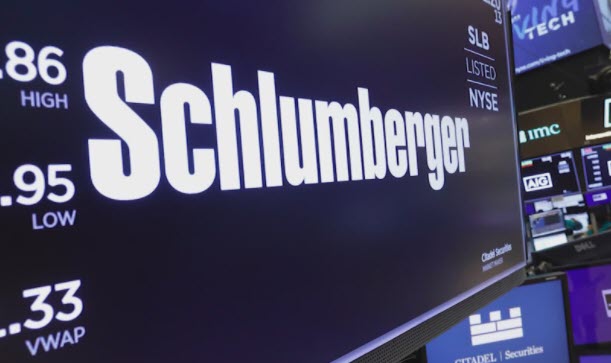North America will see sustained activity growth in US land and offshore starting in second quarter, especially once spring breakup in Canada is finished in a month or so, Olivier Le Peuch, the company’s CEO, said during a first-quarter conference call.
In addition, international activity growth will “broaden” in the second quarter as seasonal recovery in Russia and China builds on continued growth in Africa, the Middle East and Africa, while Latin America remains “resilient,” Le Peuch said, echoing largely similar comments by peer oilfield services provider Halliburton earlier in the week.
“In the second half of 2021, North America’s pace of growth is expected to moderate on budget exhaustion … but could surprise to the upside,” he said. “Internationally, our confidence in the second-half outlook has been strengthening based on the latest international rig count trends, capex signals and customer engagement.”
Moreover, the magnitude of those leading indicators, combined with upward revisions to global economic growth and demand recovery, present the potential for an “even stronger inflection” than initially anticipated for H2 2021, Le Peuch said.
Le Peuch said it believes it’s “clear” that the world is on the verge of entering a demand-led recovery – a phenomenon already underway as oil demand is rising in the US and Europe although unevenly elsewhere.
Oil demand at 2019 levels in 18 months
“What we are seeing indicates that the oil demand recovery will reach 2019 levels by or before the end of 2022,” he said. Especially in the back half of this year, higher oil demand “will trigger a multi-year recovery and industry upcycle.”
Moreover, offshore markets will see a gradual but “very strong” recovery over the long term, as the sector offers a low-carbon footprint, good geologies and “excellent” long-term oil production plateaus, he added.
Also, the economics for offshore have improved since the last upcycle from improvements in front-end engineering/design technology and digital practices, which could mean more final investment decisions on projects in the future, Le Peuch said.
E&P operators are recognizing the large opportunity set for exploiting offshore hubs, and improve the return on infrastructure that was built years before by focusing on near-field or so-called “backyard” exploration around mature fields.
All this “plays very well” to Schlumberger’s strengths since the company is expanding in that arena, he said.
“If you read some of the … reports highlighting the FID [final investment decision] pipeline, you see that projects pre-committed towards 2022-2023 and beyond have the potential to eclipse 2017-2019 in terms not only of number of projects, but also in terms of total capex invested in deepwater,” he added.
For example, in the subsea market, which Le Peuch called “very much alive,” the number of subsea trees were “short of 200” last year, compared to “higher than 250” in 2019.
“This year it should be above 200 — 220 is our prediction,” he said. “And this will be more or less increasing going forward, gradually to be between 250 to 300 over the midterm period.”
Schlumberger’s Q1 net income totaled $299 million ($0.21/share), down 20% sequentially.
Revenues in Q1 totaled $5.2 billion, representing $4.2 billion internationally (Middle East/Asia ($1.9 billion), Europe/CIS/Africa ($1.3 billion) and Latin America ($1 billion), while North America accounted for $972 million. Total revenues were down 6% sequentially and 30% year over year.
North American revenue declined 17% sequentially, although excluding impacts from the company’s OneStim pressure pumping business divestiture in that geographical segment, revenues from the region rose 10% sequentially from higher land activity, Schlumberger said.
International revenue declined 3% sequentially despite effects of the extended winter period in Russia and the usual seasonality in the Far East, the company said.
North American drillers are also optimistic about the future, both near- and long-term.
North America improves in recent weeks
A day before Schlumberger’s call, Kevin Neveu, CEO of land driller Precision Drilling, said the North American recovery appears to be rapidly marching in a positive direction.
“Without any doubt, the outlook has substantially improved even from just a few weeks ago,” Neveu said in his company’s earnings conference call April 22.
US drilling has recovered “a little faster” than expected, as Precision operated 40 rigs by mid-April, “well ahead” of its prior guidance which suggested it would reach that level by the end of June, he said.
In Canada, where the spring breakup slowdown is underway, Precision has 20 rigs operating currently, versus less than 10 at this time last year, he added.
“We have indications … for a normal summer recovery period and expect to exit Q2 with close to 40 rigs operating,” in Canada, Neveu said. “[That is] more than twice last year’s activity, and we expect that will trend up through Q3 into the fourth quarter.”
In the US, Precision averaged 33 rigs in Q1, an increase of seven rigs from Q4 2020. In Canada, activity averaged 42 rigs in the quarter, a decrease of 21 rigs from first-quarter 2020, Precision CFO Carey Thomas Ford said.
The driller had 57 rigs working in March 2020, Ford said. Activity troughed at 19 rigs in September 2020. Precision’s peak activity had reached 82 rigs in November 2018.

